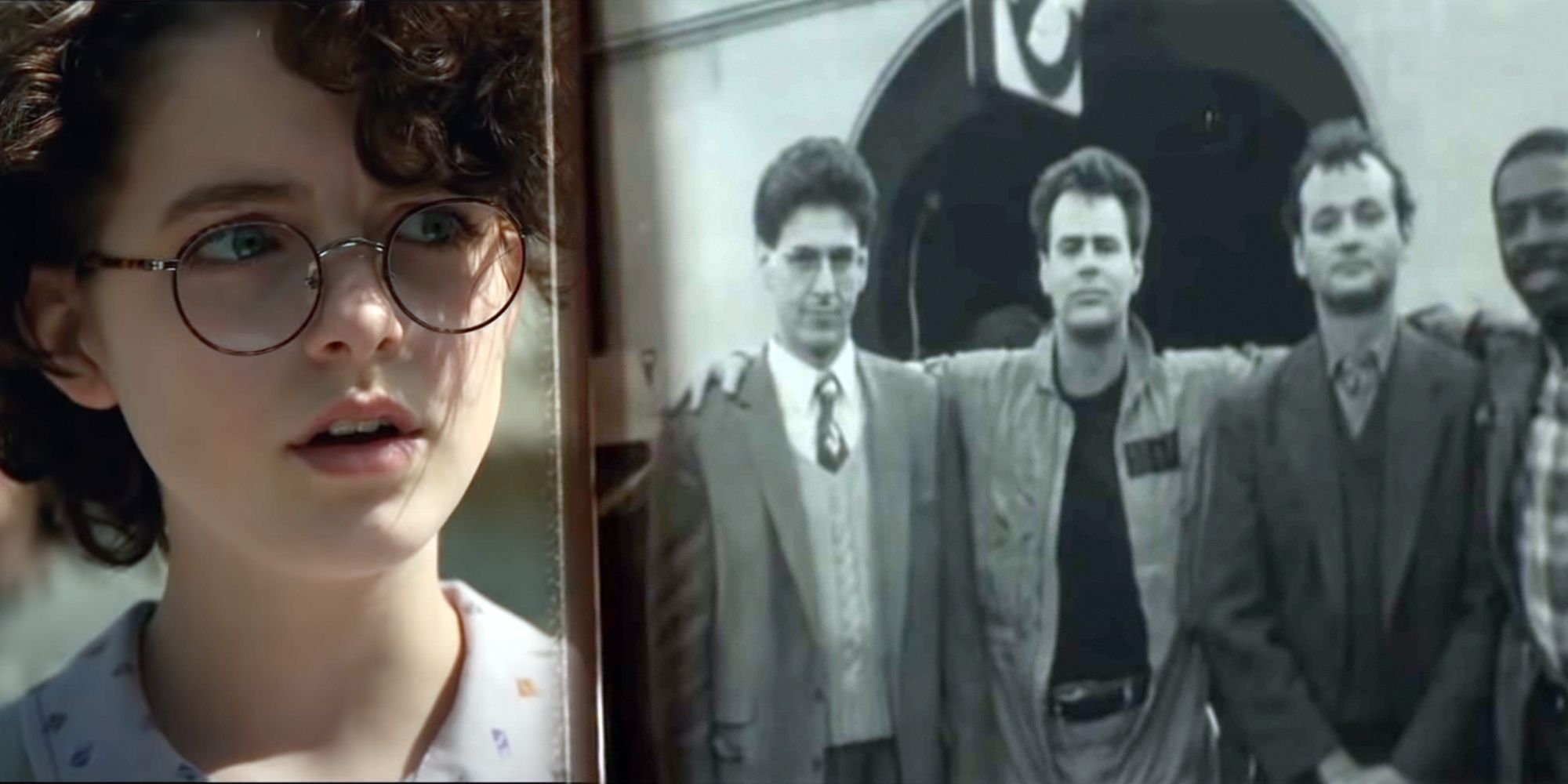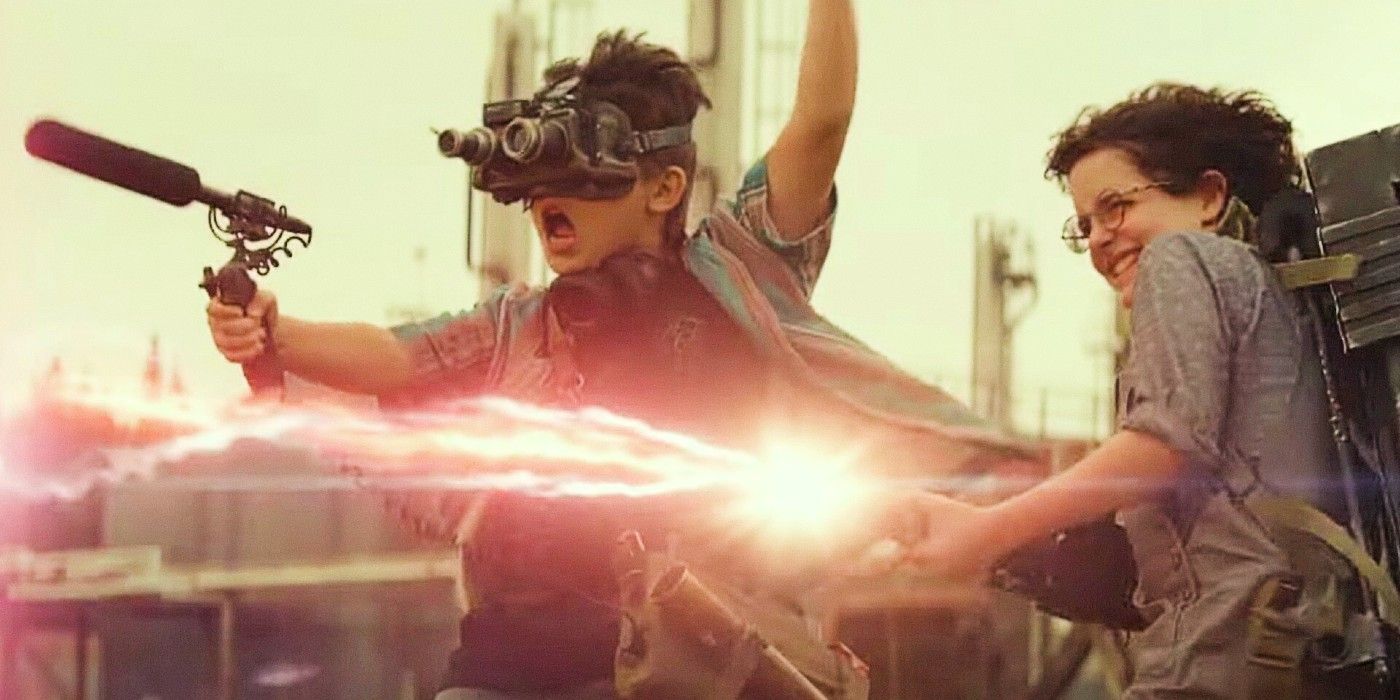Warning: SPOILERS ahead for Ghostbusters: Afterlife.
New franchise installment Ghostbusters: Afterlife kept its promise to reunite the original Ghostbusters, a moment that was arguably the worst part of the film – and that's a good thing. The return of Bill Murray, Dan Aykroyd, and Ernie Hudson reprising their respective roles as Peter Venkman, Ray Stantz, and Winston Zeddemore, has been highly anticipated and teased, with Aykroyd even featured in one of the film's theatrical trailers. As it turns out, however, the third-act arrival of the three original Ghostbusters feels hasty and borderline unnecessary. Strangely, though, that's good for the future of the franchise.
In creating Ghostbusters: Afterlife, writer/director Jason Reitman and co-writer Gil Kenan had the unenviable task of creating something new while simultaneously honoring the original 1984 film and sidestepping perceived mishaps in 1989's canon Ghostbusters 2 and the 2016 Ghostbusters reboot. This multi-generational aspect is even present behind the scenes of Afterlife, considering that Jason Reitman is the son of Ivan Reitman, the director of the first two Ghostbusters films. Thankfully, like Jason Reitman himself, Ghostbusters: Afterlife embraces the legacy of its DNA even while venturing forward into new territory.
Afterlife frankly doesn't have room for the original Ghostbusters, who appear for just one scene. And while the return of Murray, Aykroyd, and Hudson elicited cheers and applause from audiences, their arrival in the third act threatens to slow down a climactic battle between Afterlife's new crew and a resurrected Gozer the Gozerian (who also arguably didn't need to return). As satisfying as it is to see Bill Murray, Dan Aykroyd, and Ernie Hudson back in uniform, it's hard not to want to check in with Phoebe (Mckenna Grace) and her family while the camera is on the original Ghostbusters. Rather than being a disappointment, this speaks to how well Afterlife establishes its own protagonists and gets audiences invested in their story.
In fact, the reason the return of the original Ghostbusters threatens to fall flat in Afterlife is entirely due to how well the younger Reitman's film addresses the idea of legacy in its main story. Where all the other Ghostbusters films have been about ghosts, Afterlife's primary focus is family. There's no better way to honor and push beyond what came before than by literally exploring it with brand-new characters with their own motivations. By centering around the family Egon Spengler abandoned, Afterlife lets the audience rediscover their love of Ghostbusters through main characters Phoebe, Callie (Carrie Coon), and Trevor (Finn Wolfhard) - characters who take the franchise in a new direction by having motivations unrelated to busting ghosts.
Even outside of Spengler's family, Afterlife's new characters are almost all believable and hilarious. It's hard to be too nostalgic for the original Ghostbusters while watching Logan Kim's dorky-but-lovable Podcast or Paul Rudd's charming Gary Grooberson. Add in the deadpan Phoebe, relatable Trevor, and Coon's sympathetic portrayal of Callie, and Afterlife has a bevy of interesting, funny characters who can carry the film on their own. That isn't even to mention the masterful way Reitman and co. incorporated the late Harold Ramis' Egon Spengler into the story - a character, and actor, who gives the film its true power by passing the torch.
Ghostbusters: Afterlife is full of Easter eggs and references, and the return of the original team ultimately feels more like an extended callback than a crucial part of the story. The film does have a post-credits scene, however, that hints at a potential return of the legacy Ghostbusters in a sequel. Time will tell on that front, but for now, Ghostbusters: Afterlife is a shining example of how to retool a classic franchise for a new era.


